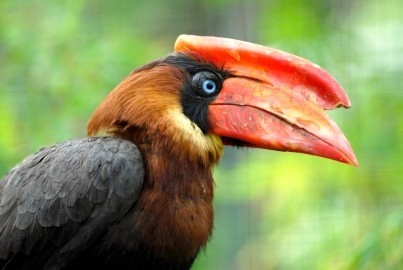 With a population of over 11 million in Manila alone, the city is overcrowded, which results in problems with crime, traffic and pollution. Travelers should be extra vigilant with their valuables as pick-pocketing is commonplace. The heat can be a problem for some visitors and it's advisable to drink plenty of bottled water to keep hydrated. The public transport system in the city is extensive, with a mixture of buses, trains, light rail, taxis and local jeepneys.
With a population of over 11 million in Manila alone, the city is overcrowded, which results in problems with crime, traffic and pollution. Travelers should be extra vigilant with their valuables as pick-pocketing is commonplace. The heat can be a problem for some visitors and it's advisable to drink plenty of bottled water to keep hydrated. The public transport system in the city is extensive, with a mixture of buses, trains, light rail, taxis and local jeepneys.Filipinos are generally quite accepting of Western people and their behavior. Tourists visiting Manila need not worry about any customs or cultural etiquette. General manners and good behavior is enough.
The most common greeting between Filipinos is a handshake, which is also acceptable for women. Tipping is not necessary but is commonly practiced by most foreigners. About 10 to 15 percent is ample unless a service charge is already included in the price.
The local currency is the Philippine peso (Php). There is an abundance of moneychangers throughout the city, particularly in the tourist hotspots. Local banks as well as large hotel usually accept foreign currency for exchange although rates vary.
For all small purchases at shops, markets and bars, cash is needed. Larger and more expensive shops as well as quality restaurants accept credit cards. Foreign ATM cards are accepted at just about all machines throughout the city.
Manila experiences a tropical climate that has three seasons each year; the hot season from April to May, the wet season from June to October and the cool season from December to February.
The hot season experiences extreme temperatures coupled with high humidity, which can be too much for those not used to the heat. The wet season has large downpours of rain with high winds. Cyclones and flooding are relatively common in Manila. The cool season is still hot, just not extremely hot. Temperatures drop slightly at night, which is a welcome relief.
Manila has an extensive public transport system that uses buses, trains, light rail, taxis and local jeepneys. Taxis are the easiest means of transport for foreign tourists and are relatively inexpensive. The bus and train network is great for accessing different parts of the city, particularly in peak hour when traffic comes to a standstill.
Ninoy Aquino International Airport (MNL) is the major airport of the country and is located approximately 5 km from the city center. There are rail connections from the airport to the city as well as express buses, taxis and jeepneys. Keep in mind peak hour traffic when arriving at the airport as the short journey can turn into a long journey with unexpected delays.
Population: 11,000,000
Spoken languages: Filipino, English
Electrical: 220 Volts, 60 Hertz
Phone/calling code: +63 2
Find more information about Manila and hotels in the area:
Manila hotels | Philippines hotels